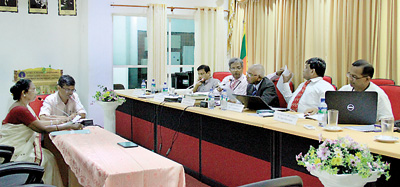A Brief Colonial History Of Ceylon(SriLanka)
Sri Lanka: One Island Two Nations
A Brief Colonial History Of Ceylon(SriLanka)
Sri Lanka: One Island Two Nations
(Full Story)
Search This Blog
Back to 500BC.
==========================
Thiranjala Weerasinghe sj.- One Island Two Nations
?????????????????????????????????????????????????Sunday, February 28, 2016
Lingering sore in a fast-healing Jaffna
Chunnakam refugee camp: The small rusty zinc sheet-roofed homes that house 112 families. Pix by Indika Handuwala




Sunday, February 28, 2016
Seven toilets are shared by the more than 400 inmates here, one for
every 58 people. “We queue up every morning to use them,” says 30
year-old Jenishwaran Jenita. The daughter of a well to -do fisherman who
once owned a trawler, she epitomises the travails of those in this
camp. She has been displaced since she was five years old. Now living in
the camp, abandoned by her husband, she and her two children depend on
her brother, a mason, for their livelihood. State assistance in the form
of rations was only available until 2000, she said.
Tales of hardships: Jenishwaran Jenita and Thavagnanam Padma
M. Paramalingam: We have a variety of bananas
The refugees in this camp, like in 37 others dotting this peninsula, are
mostly displaced fisher-families from Myliddy – the fishing village now
at the centre of a tug of war between Tamil groups and the Government.
The land where they lived was taken over to ensure security for aircraft
using the Sri Lanka Air Force (SLAF) runway. Since then, a number of
other important security installations have come up in this stretch
which juts into the sea where there is a fishing pier.
The Government wants to pay compensation to the land owners. In fact it
had been agreed to by Prime Minister Ranil Wickremesinghe. However, most
Tamil groups insist that compensation will not help. They want the SLAF
runway re-located in the Kilinochchi area and argue that was the only
way those displaced could resume fishing activity. The debate goes on.
Prolonged life in the refugee camp has spawned a new generation – refugee children. They are at a school meant only for the displaced. For these children education is limited. There is no extracurricular activity including sports. They are blissfully unaware of how other schools function. They told me it was just a case of sitting in a makeshift classroom for a few hours, sometimes learning and other times chatting.
Prolonged life in the refugee camp has spawned a new generation – refugee children. They are at a school meant only for the displaced. For these children education is limited. There is no extracurricular activity including sports. They are blissfully unaware of how other schools function. They told me it was just a case of sitting in a makeshift classroom for a few hours, sometimes learning and other times chatting.
